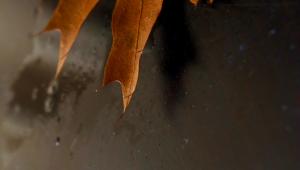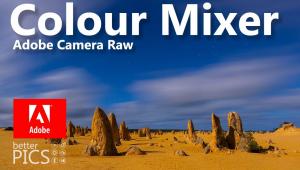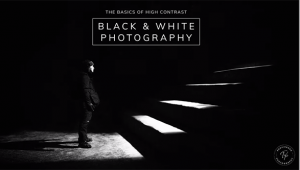Q&A Digital Photography
To aid us in making Digital Help as helpful as possible, please be specific in your query and include components, including software, that you use. David says, “Make me guess the problem and I might guess wrong.”—Editor
Digital help is designed to aid you in getting the most from your digital photography, printing, scanning, and image creation. Each month, David Brooks provides solutions to problems you might encounter with matters such as color calibration and management, digital printer and scanner settings, and working with digital photographic images with many different kinds of cameras and software. All questions sent to him will be answered with the most appropriate information he can access and provide. However, not all questions and answers will appear in this department. Readers can send questions to David Brooks directly via e-mail to: goofotografx@gmail.com or editorial@shutterbug.com, or by US Mail to: David Brooks, PO Box 2830, Lompoc, CA 93438.
Color Management & The Epson Artisan 810
Q.The Epson Artisan 810 printer has received many honors from this and other magazines for its photo printing. My experience has been that it prints well, but not with accurate colors (given known printing limitations). I found it near impossible to print a black-and-white photograph or a color photograph with regions of black or gray. The resulting print has a noticeable color cast. I have calibrated my screen using Spyder4 and have tried tests using different applications, including Photoshop CS6. I looked for printer calibration products, and although they exist, they tend to be very expensive. Any suggestions would be most appreciated.
Ori Steinberg
via e-mail
A. I have not tested and reported on the Epson Artisan 810, but I did test and report on the first of the 4000-series printers some time ago and used one for the better part of a year. The reason I personally did not cover the Artisan 810 was the printer was essentially the same as the 4000 series. I also didn’t cover that printer because after the Epson 3880 was released, the feedback I received indicated that most of my readers who wanted a 17” printer chose the 3880; I would assume because it was much less expensive.
The color cast you complain of, I would assume, is due to the possibility that your Artisan 810 is not fully and accurately color managed, although you did say it was calibrated with a Spyder4. However, color management of a system is not just calibration, but the adjustment of the display, then calibration, and then profiling. You have not provided the details of what color management you have applied, although you suggest that a more sophisticated color management system is too costly. But you did not mention what that was.
I can only suggest that for all brands and models of displays and printers, color management is the same, although there are different color management products of varying quality available to do that job. Regardless of the specifications, to achieve color management it remains the same idea, regardless of what hardware and software is used to accomplish complete adjustment, calibration, and profiling.
Without more precise specifics of what you are using, including display, both make and model of Spyder4, and what procedure and aim points you have used, it is not possible for me to suggest a solution to your problem of obtaining a color cast in your prints.
16-Bit Depth
Q. I would like your thoughts on 16-bit color space for SLR cameras. I believe no manufacturer has ever come out with a true 16-bit color processor. All record at 14-bit and convert to 16-bit color. On the other hand, my Plustek scans in 16-bit color. The technology seems to be there. Will we ever see an SLR camera with true 16-bit color? Your thoughts are welcomed.
Doug Bacso
Cleveland, OH
A. Your guess is probably as good as mine, and I would bet neither for nor against it happening. With other devices like scanners and printers, it is just logical to expand 8-bit color by double to 16-bit to provide more space for a greater diversity of tones and colors, because it costs nothing to do so. But a camera with a larger capture and storage file size would cost something in its speed, size, and storage space to make a leap from 12- or 14-bit to 16-bit. So the question is a balance of loss in efficiency and an increase in image quality. It may be that little more can be gained if it cannot be seen, and how it detracts from the efficiency of the device and the number of files it can store in a given space. It takes a discerning eye to see the image quality advantage of a greater depth over 8-bit, so is 10-bit or 12-bit enough? From a visual perspective the answer is probably yes, but with 16-bit, the answer is definitely no.
Lightroom, Metadata And Image Processors
Q. I have a Mac mini with a 2.5GHz Intel Core i5 and 8GB memory. A Dell U2410 monitor connects to the Mac mini by a Thunderbolt DVI adapter. I use Lightroom 5 (LR5) to process my digital photos. The problem I am having is when I make adjustments in the LR5 Develop module, the screen blurs for a fraction of a second or more and the adjustment is not shown instantaneously on the screen. Is this caused by the Mac mini, the monitor, or something else?
R. Hoff
via e-mail
A. The cause of the delay is the Lightroom application. It is unusual because unlike other graphics applications it does not change the data of the video directly, but calculates it as a metadata attachment added as an extension to the core Raw data file, which is not changed. In other words, changes in adjustment to the look of the image do not change the video data, which is the basis of what is seen on screen, but a metadata addition to that file. This is much more complex than the usual graphics processes used by other graphics editing applications, and takes more data processing time for interpretation to the video content that is reproduced on screen.
Lightroom is, in essence, asking the hardware to wait while it processes the metadata and then adds that to the video data that is seen on screen. So it is not a functional defect of the hardware, but one basic to the design of Lightroom. Unless a photographer is a commercial user who requires a complex database to keep track of client identification of images, I do not recommend Lightroom as a primary image-editing application, as its complex, nondestructive metadata method of recording image-editing changes is an inefficient way to perform graphics editing with a computer. There are simpler and more direct workflows that can be used as a more efficient workflow method for editing Raw files from a digital camera that do not involve the use of a complex database as part of the image-editing function.
- Log in or register to post comments


































